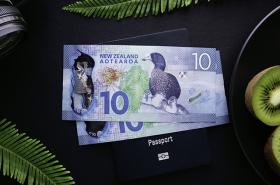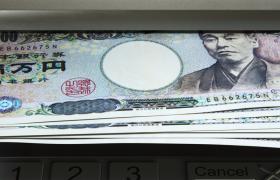Quick Contact

26th July 2019
It’s been a busy week for the Kiwi dollar as it’s fought to hang on to the gains made last week against the USD and GBP as their respective governments come to terms with global instabilities.
It certainly wasn’t all negative for the NZD as slight gains were made against the EUR on the back of softening monetary policy in Europe and against the CAD for the same reason.
With the RBNZ looking increasingly likely to continue with interest rate drops over the coming months, it will be interesting to see how the Kiwi dollar performs. At least one more interest rate cut appears built in to the markets, so it may take 2 consecutive cuts to weaken the NZD to the point it takes a hit or 2.
At the moment though, 1 NZD will buy you:
0.6543 US dollars
70.1175 Japanese yen
0.5774 euros
0.5168 Great British pound
0.8615 Canadian dollars
0.9359 Australian dollars
0.8763 Singapore dollars
Softening domestic economy has RBNZ considering more interest rate cuts
Many domestic economists are now expecting the RBNZ to cut the official cash rate once again by 25 basis points to 1.25% at their 7 August meeting while signalling the potential for more. Many are suggesting a follow-up cut in November to take the rate down to 1.0 on the back of domestic activity coming in weaker than the RBNZ had originally forecast.
Next week is a big week for data highlights with monthly surveys of business and consumer confidence (31 Jul and 2 Aug) being the last data for the RBNZ to digest before coming to their decision.
The domestic economy has clearly slowed further than anticipated. Previous releases have shown dwindling business confidence which has translated into slower hiring over the previous months below expectations to go with dropping consumer confidence.
The recent rise in the NZD exchange rate against most major currencies will also bother the RBNZ considering part of their methodology behind rate cuts was to lower the NZD to help spark more export action.
If reports are optimistic about next week’s consumer and business outlook, it could provide a springboard for the risk-sensitive New Zealand Dollar and looking ahead, the NZD could rise against the GBP and USD following reports about the upcoming face-to-face talks between the US and China, hopefully putting the Trade War on the back burner.
Meanwhile, focus will shift to Boris Johnson’s reign as PM and whether he will stick to his rhetoric about getting more concessions from the EU and delivering a Brexit come hell or high water. If there are signs Johnson may be successful in persuading the EU to agree to a new Brexit deal the GBP/NZD exchange rate could rise.
BOJO hoping for fairytale honeymoon period
Now that one more Brexit sideshow is over and Johnson is sworn in as new UK PM, the real work can start chugging away on getting the UK out of the Eurozone by October 31st, whatever that may look like.
Boris Johnson will have his work cut out for him, facing a to-do list stuffed full of difficult tasks when he takes office, from negotiating a palatable Brexit strategy to handling an escalating diplomatic crisis with Iran where the Revolutionary Guard has seized a British oil tanker. A free-trade deal with the US is also a top priority and Boris has already been dubbed Britain Trump by his US counterpart in what could be the start of a blossoming relationship. Mr Johnson has also proposed an array of spending to support health, social care, policing and business in order to get things moving quickly from Theresa May.
Theresa May will return to serve as a backbencher in the House of Commons and goes down as one of the shortest serving Prime Minister’s in the last century, lasting a total of 1,106 days in office.
That’s actually pretty long in Aussie PM years.
Boris also wasted no time making the government his own, with 17 cabinet ministers changing on his first day in power dubbed by the media as the “night of the blond knives”. He vowed to take Britain out of the EU on October 31 — in 99 days time — “no ifs or buts” with a “better deal” than the one currently on the table.
Some uncertainty for the UK has been resolved with Johnson now PM and with a bit of luck for the dude, a honeymoon period may loom, and Johnson may initiate tax and policy changes to bolster a market-friendly profile. A lift in sentiment could trigger business investment activity and stimulate consumer confidence.
There are also risks Johnson forms a hard-Brexit Cabinet unwilling to negotiate with the EU in discussions, Irish hard border concerns remain unabated, The EU offer little intent to alter the 31st deadline if needed and the whole Brexit scenario keeps racing along to a fiery end.
There’s only one way to find out. Stay tuned to see how the GBP will perform against the AUD, NZD, USD and EUR in the face of continuing instability.
Signed up to our Travel Money Club? Everyone that joins is in the running to win $500 every month which is pretty darn handy while also staying up to date with all the latest fluctuations.
US and China back on speaking terms, but talk is cheap this deep in the Trade War
Even though Trump and President Xi Jinping agreed to a ceasefire at the G20 summit in Tokyo, things haven’t exactly been rosy for the heavyweight pair. On Monday, Huawei — a company that President Donald Trump has singled out for beef before — was the subject of a report that claimed it may have violated US sanctions on North Korea. The next day, Huawei announced it would sack US staff, a decision it blamed on American restrictions on its business.
The role Huawei plays in any trade deal is a big curveball. The world's largest telecommunications equipment maker and leading Chinese smartphone brand has been on a US trade blacklist since May.
In Tokyo, Trump said he would not impose new tariffs and said China agreed to make agricultural purchases, but Trump said on this week that China was not living up to promises to buy U.S. farm goods.
Complicating matters even more, the United States slapped sanctions on a Chinese company this week for violating a ban on buying Iranian oil. After that announcement, China didn't pull any punches, slamming what it called Washington's "bullying" behaviour.
China’s latest round of retaliatory tariffs put the combined tax rate on a bottle of American wine at 93%, pushing prices out of reach for much of the Asian country’s growing middle class.
Risks to the USD performance appear to be subsiding; lawmakers are working on a debt ceiling deal and US-China trade talks are set to resume next week. A comprehensive deal will remain elusive but there is certainly more hope this time round that a deal will be struck.
Companies like Caterpillar (CAT), one of the biggest components in the US Stock Market will certainly be hoping so too, their shares having plunged 4% in early trading due to the effect of the US/China Trade War on the bottom line.
In China, meanwhile, economic growth has slumped to its lowest level in nearly three decades. The country is struggling to rein in high levels of debt and consumers are spending less freely than they were a year ago.
All eyes will be watching these negotiations closely and any positive moves will be greatly appreciated by both the AUD and NZD that are both very export and China reliant economies. If the Federal Reserve also signals its intentions to cut interest rates by more than .25 basis points, the AUD and NZD will likely enjoy that in the short term too.
In the meantime, don’t miss any of the action by signing up for Rate Alerts - Choose your currency, elect your ideal rate and we will send you an alert when it hits that point.
This blog is provided for information only and does not take into consideration your objectives, financial situation or needs. You should consider whether the information and suggestions contained in any blog entry are appropriate for you, having regard to your own objectives, financial situation and needs. While we take reasonable care in providing the blog, we give no warranties or representations that it is complete or accurate, or is appropriate for you. We are not liable for any loss caused, whether due to negligence or otherwise, arising from the use of, or reliance on, the information and/or suggestions contained in this blog. All rates are quoted from the Travel Money NZ website and are valid as of 26 July 2019. *Terms and conditions apply to Rate Guard.










